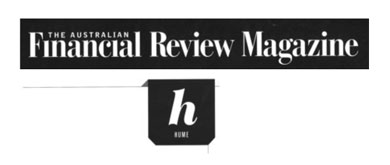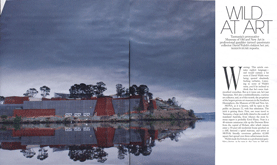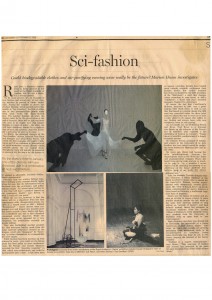
It seems Australians were among the rare few who were not ‘frightened’ or ‘shocked’ by the radical ideas of Yohji of Yamamoto and Rei Kawakubo of Comme des Garçons.
Belinda Seper is one of the most respected fashion retailers in Australia. Before her retail career, she was a model, which overlapped with being a soldier. While an unusual career arc, it’s is no more unusual than a fashion editor I know who doubles as a trapeze artist or the chef in my local café who is also an acrobat. Small and lean, he moves with the feline grace of someone you imagine, yes, could manage back flips while up on a high wire although, personally, I have never seen him doing anything more complicated than flip a steak while frying an egg. As for Seper, early multitasking involved stripping back a weapon while applying nail lacquer. (Ok, I’ve exaggerated. She used to do one, then the other. But that doesn’t take away from the fact she was the fastest shot in her battalion. And had the best manicure.)
One of my most valuable life lessons came from Seper, who once shared her motto, ‘Never forget the six Ps’. These spell out ‘Prior Planning Prevents a Piss Poor Performance’. I have to say, had I learned that motto from a puritan American and it had been the five Ps, it would not have stuck. Right now, I am grappling with the eight Ps, which might be familiar to you; ‘Prior Planning Prevents a Piss Poor Powerpoint Performance’. What a lot of prep to find 87 images to back up a 45 minute speech! Especially as I never actually said yes to this. (Didn’t it start as a panel discussion and just chatting for a few minutes?).
The subject is the arrival in Europe of the Japanese designers, which I am a little too young to remember personally. However, having read all the contemporary reports from the early eighties, it seems the Australians were among the rare few who were not ‘frightened’ or ‘shocked’ by the radical ideas of Yohji Yamamoto and Rei Kawakubo of Comme des Garçons. I can find no Australian reports urging readers to run for the hills, or indeed the bunkers. The French talked of the invasion of the ‘yellow peril’ and judged the debuts of two designers who have turned out to be among the greatest of the last quarter century as “Hiroshima, sans amour”.
There will be Q&A afterwards, so I am trying to be superprepared, although that will probably translate as staying up all night and then not having time to have my roots done. As a rule, which alas I always seem to break, fashion people are groomed, immaculate. But, until recently, the best you’d expect of many of them as public speakers was that they’d hide behind the lectern, mumble a bit, then slink off stage. But media training has changed the game irrevocably – to the benefit of all.
I was at the International Herald Tribune’s Luxury conference in London recently (it’s in Sao Paolo next year – exciting!), and not only were all the thousand or so delegates chic, but the immaculate speakers – designers and CEOs – gave precisely calibrated performances, never straying off brand message. They were all way too prepared to risk falling off the tightrope.
Bar one. Paul Smith, the British menswear designer, spoke off the cuff (he had a few slides, but they got muddled). He said that his failsafe for public speaking is to bring a rubber chicken, which he then pulled out and brought the house down. So I’m thinking, what if the laptop fizzles or the audience react like the French in 1981 and, at the sight of a tattered dress, duck for cover? Although I realized I was taking the eight Ps too far when I caught myself eyeing up a friend’s new kitten and wondering where they kept the travel basket so that, if the speech goes bellyup, I can let the cat of out of the bag.
International fashion editor Marion Hume is based in London.




